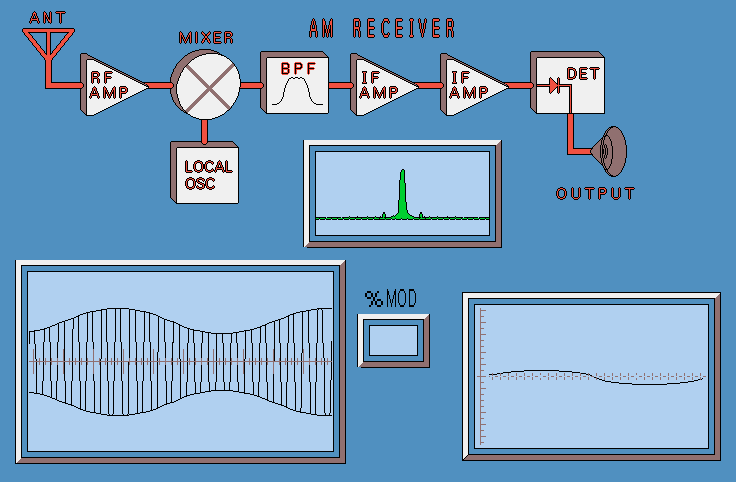
| SoFoEaT > Coursework Online > Trimester 2 2001/2002 Session > ETM2016 Analog Communications |
| Group TE 1 |
| Desmond Kho Teck Kiang | 1001112325 |
| Lai Koon Yen | 1001112121 |

If the modulated carrier is rectified and the carrier frequency filtered out, the modulating signal can be recovered. This form of modulation is not a very efficient way to send information; the power required is relatively large because the carrier, which contains no information, is sent along with the information.
In a variant of amplitude modulation, called single sideband modulation
(SSB), the modulated signal contains only one sideband and no carrier.
The information can be demodulated only if the carrier is used as a reference.
This is normally accomplished by generating a wave in the receiver at the
carrier frequency. SSB modulation is used for long-distance telephony (such
as in the amateur radio bands) and telegraphy over land and submarine cables.
The filtered signal is amplified before it’s applied to a balanced mixer,
together with the local oscillator voltage, to shift the frequency of the
signal to the allocated frequency band. The up-converted signal is
amplified and then passed on to the final high-power amplifier to obtain
the wanted transmitted signal.
The function of the mixer stage is to convert the wanted signal frequency of the receiver. This process is carried out by mixing the signal frequency with the output of the local oscillator and select the resultant difference frequency.
The purpose of the IF amplifier is to provide most of the gain and the selectivity of the receiver. The high first intermediate (IF Amplifier I) pushes the image frequency farther away from the signal frequency and permits much better attenuation of it. The low second intermediate (IF Amplifier II), for low fixed operating frequency, particular sharp selectivity and hence good adjacent-channel rejection.
AGC (Automatic Gain Control) detector keeps the IF signal in the output stages relatively constant. The purpose of the diode detector (envelope detector) stage is to recover the information modulated onto the carrier wave appearing at the output of the IF amplifier (Demodulated).
The function of the audio frequency stage is to develop sufficient audio
frequency power to operate the loudspeaker or microphone. The audio
frequency will include a volume control.
- Paul H. Young, “Electronic Communication Techniques”, 3rd Edition, Macmillan Publishing Company, 1990
- D C Green, “Radio Systems for Technicians”, 2nd Edition, Longman Group Limited, 1995
- John Pearson, “ Basic Communication
Theory”, Prentice Hall, 1992
Any comments, please contact host.
Last updated: 15 October 2001
Copyright © 2001. All rights reserved